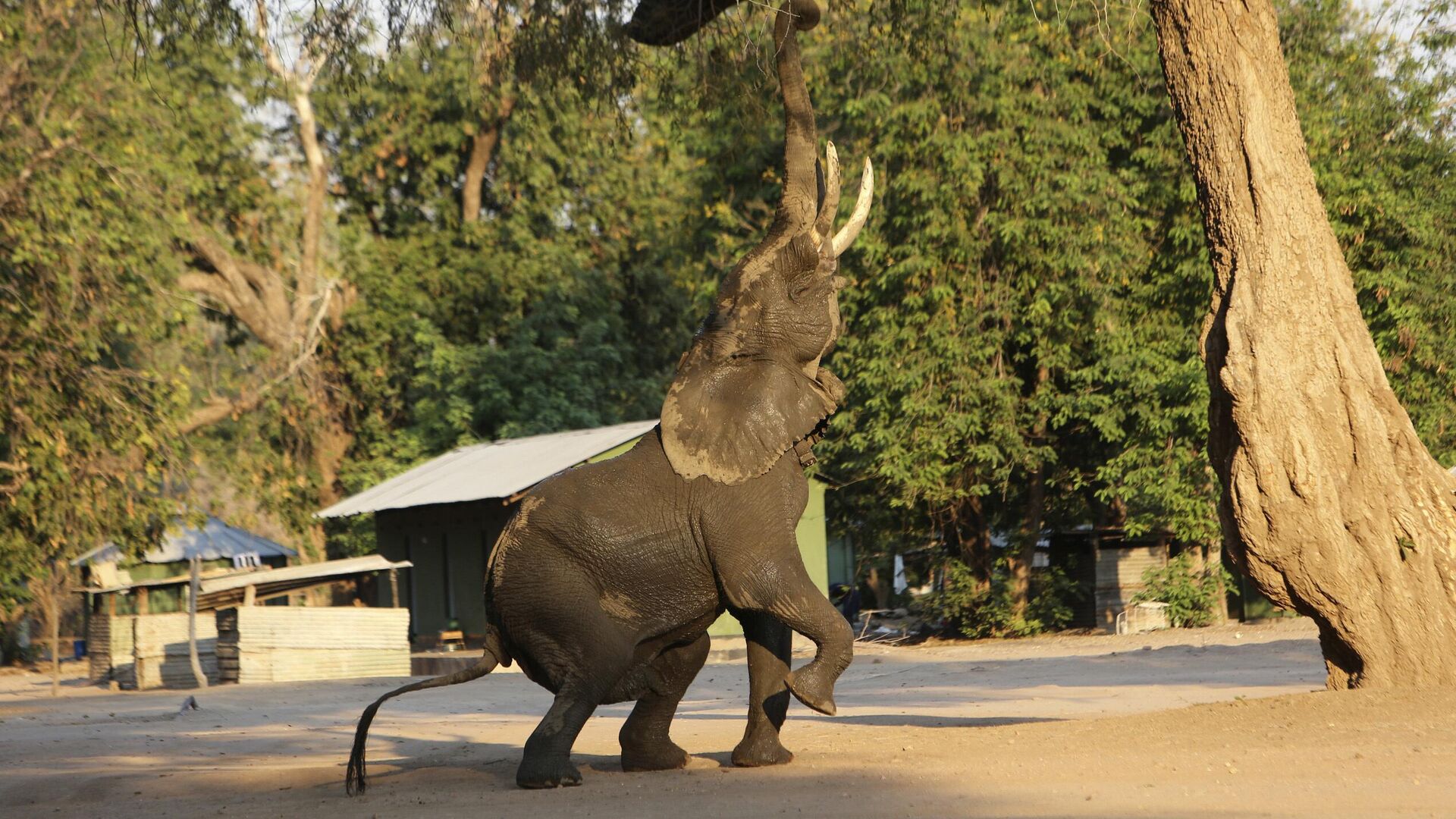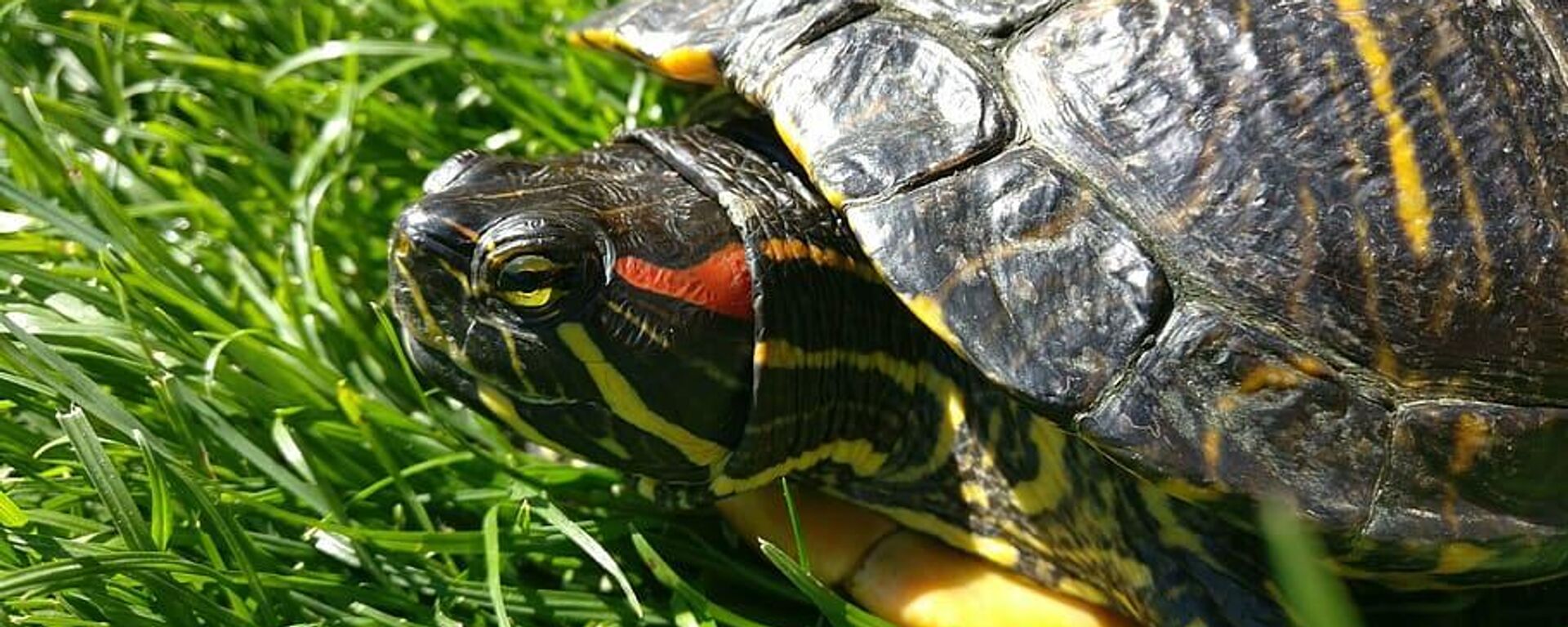https://en.sputniknews.africa/20230502/africas-elephant-population-has-dropped-95-in-100-years-wwf-says-1058977360.html
Africa's Elephant Population Has Dropped 95% in 100 Years, WWF Says
Africa's Elephant Population Has Dropped 95% in 100 Years, WWF Says
Sputnik Africa
The elephant population fell dramatically in the African continent in the 19th and 20th centuries. There are only about 415,000 individuals left (compared to 3... 02.05.2023, Sputnik Africa
2023-05-02T08:55+0200
2023-05-02T08:55+0200
2023-05-02T08:55+0200
sub-saharan africa
animals
world wildlife fund (wwf)
endangered species
poaching
animals' protection
death toll
savanna
https://cdn1.img.sputniknews.africa/img/07e7/05/02/1058978043_0:264:2541:1693_1920x0_80_0_0_2623e2b7274bdf6a07113ed6aebc4236.jpg
The World Wildlife Fund is sounding the alarm: elephants, the largest land animals, are in danger in Africa. Their population of 3 to 5 million at the beginning of the 20th century has shrunk to about 415,000 individuals; a fall totaling 95% of the population.The two species, the African savanna elephant and the African forest elephant, are in danger of extinction and critically endangered, respectively.According to the WWF, habitat loss, human-elephant conflict and poaching are the three direct threats to their survival.Poaching is the most significant threat, as elephants are illegally slaughtered for their meat, skins, and especially for their ivory. Each year, poachers kill between 20,000 and 30,000 of them.WWF's effortsTo conserve the animals, WWF works on four major axes. The first is aimed at improving the management and protection of elephants by providing equipment and training to anti-poaching teams. The second is set to reduce the illegal trade by monitoring trends. The other two focus on mitigating human-elephant conflict and increasing the number of elephants in range countries.
https://en.sputniknews.africa/20230417/red-eared-invasive-slider-turtles-turn-up-in-south-africa-1058663021.html
savanna
Sputnik Africa
feedback@sputniknews.com
+74956456601
MIA „Rossiya Segodnya“
2023
Sputnik Africa
feedback@sputniknews.com
+74956456601
MIA „Rossiya Segodnya“
News
en_EN
Sputnik Africa
feedback@sputniknews.com
+74956456601
MIA „Rossiya Segodnya“
Sputnik Africa
feedback@sputniknews.com
+74956456601
MIA „Rossiya Segodnya“
world wildlife fund (wwf), african animals, african elephants, elephant population, african continent, endangered species, in the 19th century, in the 20th century, african savanna elephant, african forest elephant, anilmals' protection, death toll
world wildlife fund (wwf), african animals, african elephants, elephant population, african continent, endangered species, in the 19th century, in the 20th century, african savanna elephant, african forest elephant, anilmals' protection, death toll
Africa's Elephant Population Has Dropped 95% in 100 Years, WWF Says
The elephant population fell dramatically in the African continent in the 19th and 20th centuries. There are only about 415,000 individuals left (compared to 3 to 5 million at the beginning of the 20th century), warns the World Wildlife Fund (WWF).
The World Wildlife Fund
is sounding the alarm: elephants, the largest land animals, are in danger in Africa. Their population of 3 to 5 million at the beginning of the 20th century has shrunk to about 415,000 individuals; a fall totaling 95% of the population.
"In 100 years we have already lost more than 95% of African elephants, which is why WWF is launching the 'SOS Elephant' campaign," the organization writes on its website.
The two species, the African savanna elephant and the African forest elephant, are in danger of extinction and critically endangered, respectively.
According to the WWF, habitat loss, human-elephant conflict and poaching are the three direct threats to their survival.
Poaching is the most significant threat, as elephants are illegally slaughtered for their meat, skins, and especially for their ivory. Each year, poachers kill between 20,000 and 30,000 of them.
To conserve the animals, WWF
works on four major axes. The first is aimed at improving the management and protection of elephants by providing equipment and training to anti-poaching teams. The second is set to reduce the illegal trade by monitoring trends. The other two focus on mitigating human-elephant conflict and increasing the number of elephants in range countries.


